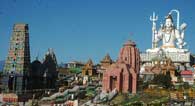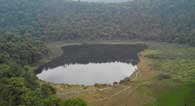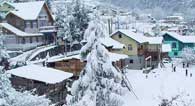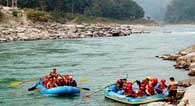CONTACT US
Church Road, Near Pelling Taxi stand, Gangtok-737101, Sikkim, India
Phone no.
+91-9832564013, 03592-206888, 9002069916, 9933448360.
Email : sikkim444@gmail.com
Wildlife Tourism
Due to the variation of altitude from sea level to summit Sikkim possess a wide and varied spectrum of flora and fauna. It has one of the richest assemblages of habitat in the world. The zoological and botanical richness and diversity is excellent boasting of more than 4000 species of plants, 300 species of fern and its allies, 11 species of Oaks, 8 species of tree fern 30-40 species of primula, 20 species of bamboos, 144 species of mammals, 500-600 species of birds (30% of all birds found in Indian sub continent), over 400 species of butterflies and moths, together with many reptiles, medicinal herbs and shrubs. The state can be broadly classified into three zones:-
(a) Tropical (Sea Level ?1500 m)
(b) Temperate (from 1500m to 3500 m)
(c) Alpine (above 3500m)
The jungle of lower altitude harbor Jungle cuts, Mongoose, sparrow and has abundance of bamboos, trees firm, walnut, sub, and oak. More than 600 species of orchids are found in Sikkim, which are indeed the jewels in the crown. The most important of them are ? Cymbidiums, Vanda Cuttaleya, Hookerina, and Farmeri. Nobile orchid (Dendrobium nobile) is declared as the State flower. The fauna of Temperate Zone comprises of common Langur, Leopard cats, Red Panda, Musk deer, Himalayan black bear and the flying squirrel. The arid cold alpine region of Sikkim harbors snow leopard and wild ass roaming amongst rhododendron, the state host around 30 species of Rhododendron. The Rhododendron Nevium is delivered as the state tree of Sikkim. Parks and Sanctuaries play an important role in promoting ecotourism. some of the important parks and sanctuaries are:
(i) Khangchendzonga National Park which has been declared as Biosphere resource in 2001 is the only national park in the state.
(ii)
Fambong Lho wildlife Sanctuary located about 20 kilometers from Gangtok covering an area of 5200 hectares.
(iii) Maenam wildlife sanctuary covering an area of 3500 hectares located above Ravangla shelters a number of animals of temperate forest.
(iv) Singbha Rhododendron Sanctuary situated near Yumthang in North Sikkim covering an area of 33 hectares.
(v) Kyongnosla alpine sanctuary is situated an the are near the Tsomgo lake covering an area of 400 hectares.
(vi) Varsey Rhododendron Sanctuary this in the west corner of Sikkim.
Availability of local food is one of the attractions of the tourists. Gundruk soup, Sinki Achar, Dalley Khorsani, Silam, Churpi, Kinema are some of the traditional food that has caught the attraction of the ecotourists. River system is equally important for the promotion of the Ecotourism. The Tista and Rangit along with their tributaries provide a unique biodiversity. The floral wealth such as Primulas, Rhododendrons, Michellia and Orchids are important attractions for the tourists. Tours to high altitude areas like Yumthang, Varsey, and Yoksum etc help to promote Ecotourism. Sikkim harbors some 400 species of medicinal and aromatic plants distributed through out the sub-tropical broad-leaved forests to the alpine meadows. The temperate and alpine land species such plants are attractive items for the tourists from the plains. Sikkim being the home of some 50% of the orchids of India, tourists would like to see these in nature. Again, from Ecotourism point of view, the high altitude animals such as yak, sheep, shapi are important attractions as these animals are not seen everywhere. Grazing of these animals in alpine meadows, yak riding and alpine animals products are the important attractions that an Ecotourist would like to see.
Conclusionn
Mountain environment is gifted with such an excellent ecosystem that provides a chance for organizing Ecotourism, which is expected by a man for the peace of his mind and soul.
Sikkim cannot be a destination for mass tourism. Because it cannot cope with the large number of tourists at low cost. Its carrying capacity is very low and mass tourism will just aggravate the problems that are being faced by the world today. So Ecotourism is the sonly solution to this problem that can continue the developmental process together with conserving the nature and its products.

















